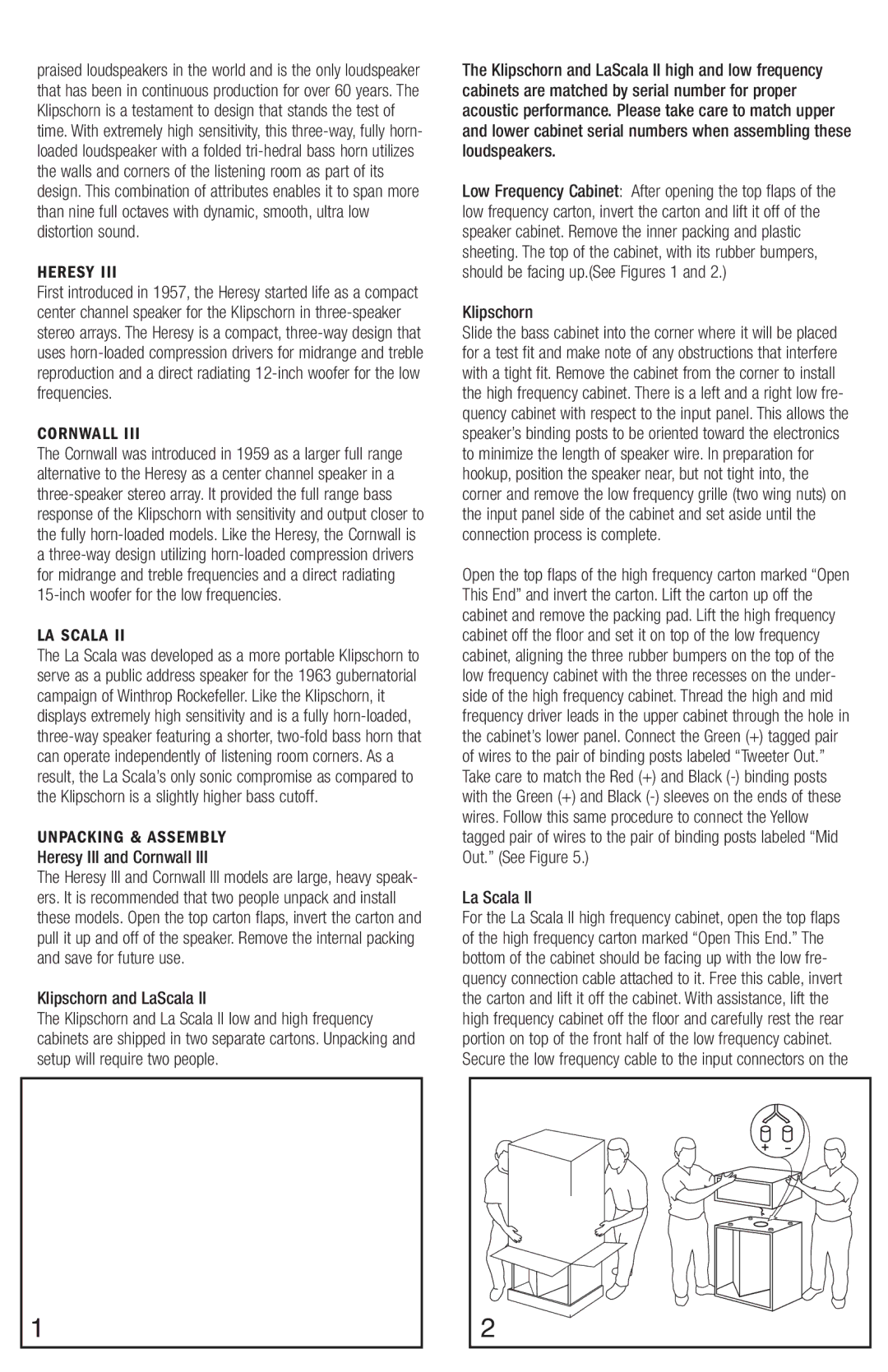Heresy III, Cornwall III specifications
The Klipsch Cornwall III and Heresy III speakers are renowned for their impressive sound quality and classic design, making them popular choices among audiophiles and casual listeners alike. Klipsch, a company with a rich heritage in audio technology, has crafted these models to deliver an extraordinary listening experience.The Cornwall III is a floor-standing speaker that combines power and precision to create a captivating audio performance. One of its standout features is its Tractrix Horn technology, which enhances the speaker's efficiency and directs sound waves for improved clarity and detail. This design minimizes distortion while maximizing output, allowing listeners to experience their music as it was intended. The Cornwall III is equipped with a 15-inch woofer, a 1.75-inch midrange compression driver, and a 1-inch titanium diaphragm compression driver. This three-way configuration ensures that the speaker accurately reproduces a wide range of frequencies, from thunderous bass to sparkling highs.
In contrast, the Heresy III is a smaller bookshelf speaker designed for those who prefer a compact option without sacrificing audio performance. Despite its size, the Heresy III boasts impressive output capabilities, making it suitable for both small rooms and larger spaces. The speaker features a similar Tractrix Horn design, including a 12-inch woofer, a 1.75-inch midrange compression driver, and a 1-inch titanium diaphragm compression driver. This configuration allows the Heresy III to produce rich, full-bodied sound, capturing the nuances of any genre, from classical to rock.
Both models incorporate a high-quality crossover network, which plays a crucial role in distributing frequencies to the appropriate drivers. This ensures seamless transitions across the frequency spectrum, providing a cohesive listening experience. Klipsch's commitment to quality is evident in the materials used in both speakers, including premium MDF construction and real wood veneer finishes that enhance their aesthetic appeal.
Another noteworthy characteristic of the Cornwall III and Heresy III is their sensitivity rating. With a high sensitivity of 99 dB for the Cornwall III and 98 dB for the Heresy III, these speakers are highly efficient, meaning they can produce great volume levels with minimal power. This adaptability makes them suitable for a variety of amplifier configurations, including tube and solid-state options.
In summary, the Klipsch Cornwall III and Heresy III speakers exemplify the brand’s dedication to quality sound reproduction. Their advanced technologies and thoughtful designs make them exceptional choices for those who appreciate high-fidelity audio in a timeless aesthetic. Whether you opt for the powerful Cornwall III or the compact Heresy III, both models promise an immersive listening experience that will impress for years to come.

